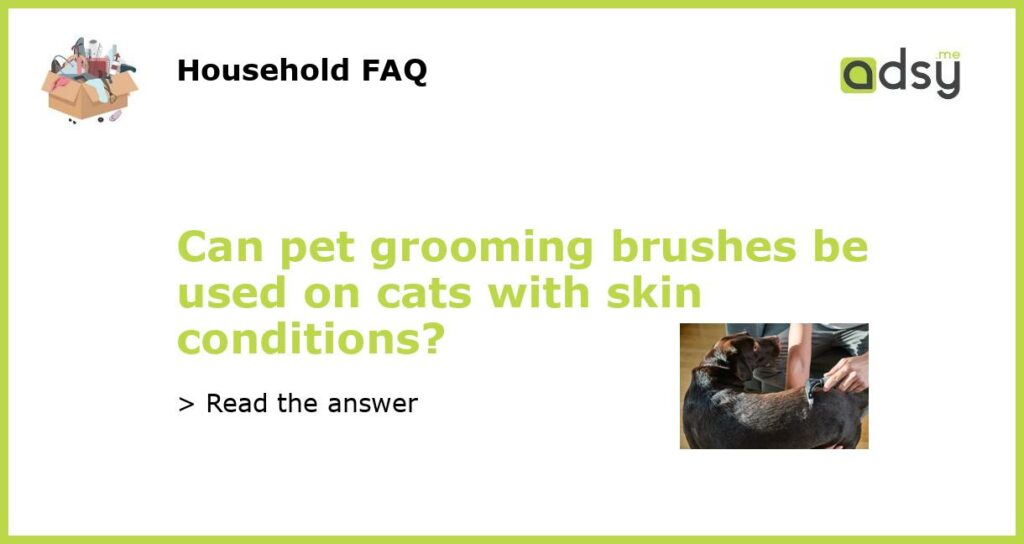Yes, pet grooming brushes can be used on cats with skin conditions
Pet grooming brushes are an essential tool for maintaining your cat’s coat and overall health. However, when your cat has a skin condition or sensitive skin, it is important to choose the right type of brush and use it with caution. In this article, we will discuss the different types of pet grooming brushes that can be used on cats with skin conditions and provide valuable tips for effective grooming.
The importance of grooming for cats with skin conditions
Cats with skin conditions often suffer from itchiness, irritation, and sometimes even pain. Regular grooming can help to alleviate these symptoms by removing loose hair, dirt, and debris from the coat. It also stimulates blood circulation and distributes natural oils, which can improve the overall appearance and health of your cat’s skin and coat.
Choosing the right brush for cats with skin conditions
When selecting a brush for cats with skin conditions, it is important to choose one that is gentle and non-irritating. Avoid brushes with sharp bristles or hard materials that can further irritate your cat’s skin. Instead, opt for brushes with soft bristles or rubber nubs that can effectively remove loose hair without causing discomfort. Slicker brushes, grooming gloves, and rubber brushes are some of the best options for cats with sensitive skin.
Tips for using grooming brushes on cats with skin conditions
Here are some tips for using grooming brushes on cats with skin conditions:
- Start slow: If your cat is not used to being groomed or has a particularly sensitive skin condition, start by gently touching them with the brush and gradually introduce brushing sessions.
- Be gentle: Use light pressure and avoid tugging or pulling on your cat’s hair. Be mindful of any sensitive areas and avoid brushing over open sores or scabs.
- Monitor your cat’s reaction: Pay attention to your cat’s body language and signs of discomfort. If they become agitated or start exhibiting signs of pain, stop the grooming session and consult with a veterinarian.
- Brush in the direction of hair growth: Brushing in the direction of hair growth helps to prevent tangles and matting while reducing the risk of further irritating your cat’s skin.
- Keep the brush clean: Regularly clean your grooming brushes to remove any trapped hair, dirt, or debris. This helps to prevent the transfer of allergens and bacteria that can worsen your cat’s skin condition.
Consulting with a veterinarian
While grooming brushes can be beneficial for cats with skin conditions, it is always recommended to consult with a veterinarian before starting any grooming routine. They can provide valuable advice specific to your cat’s condition and recommend any additional treatments or care products that may be needed.
In conclusion, pet grooming brushes can be used on cats with skin conditions, but it is important to choose the right type of brush and use it with caution. Regular grooming can help to alleviate symptoms and improve the overall health of your cat’s skin and coat. Remember to be gentle, monitor your cat’s reaction, and consult with a veterinarian for personalized advice and recommendations.






